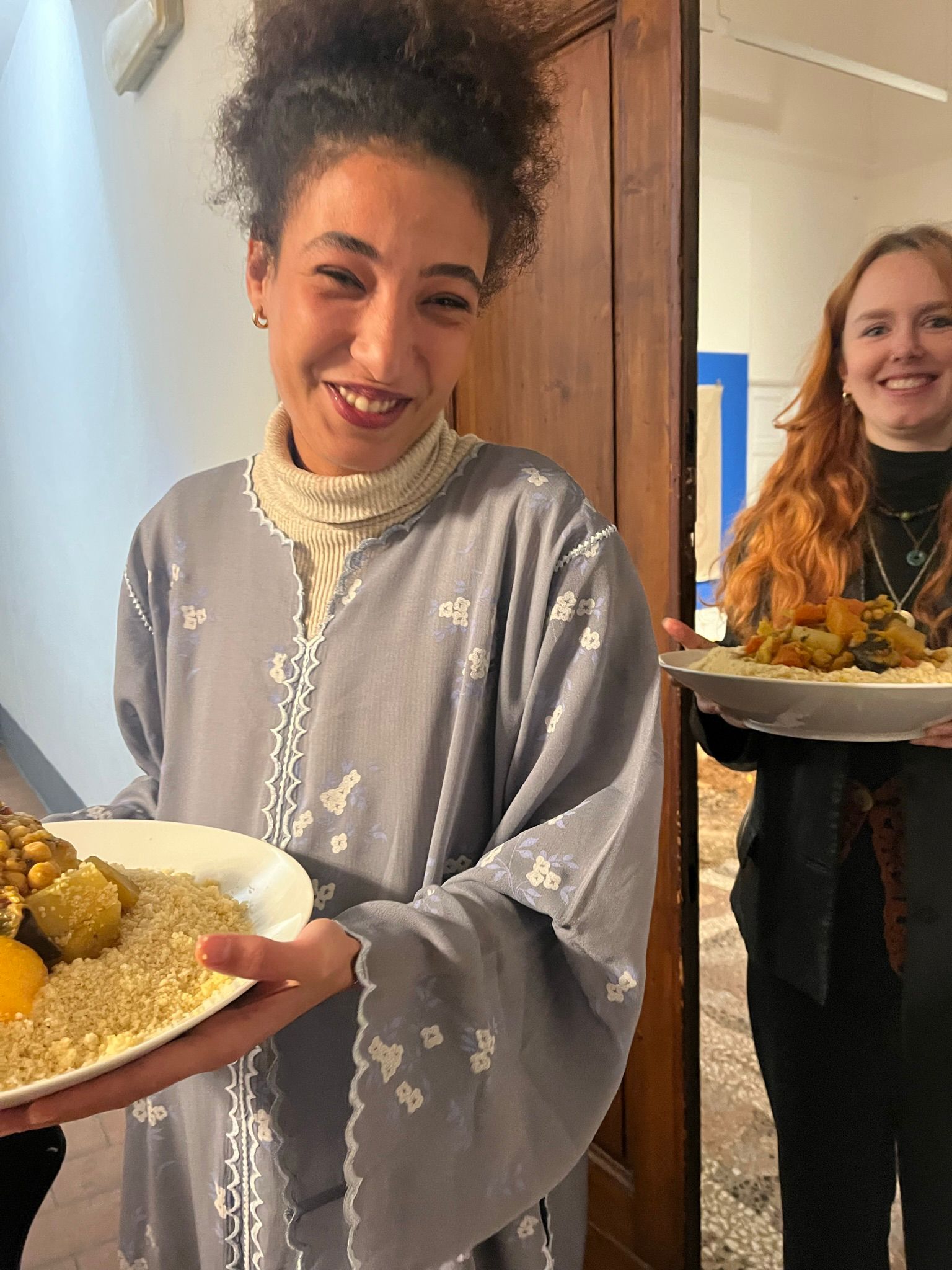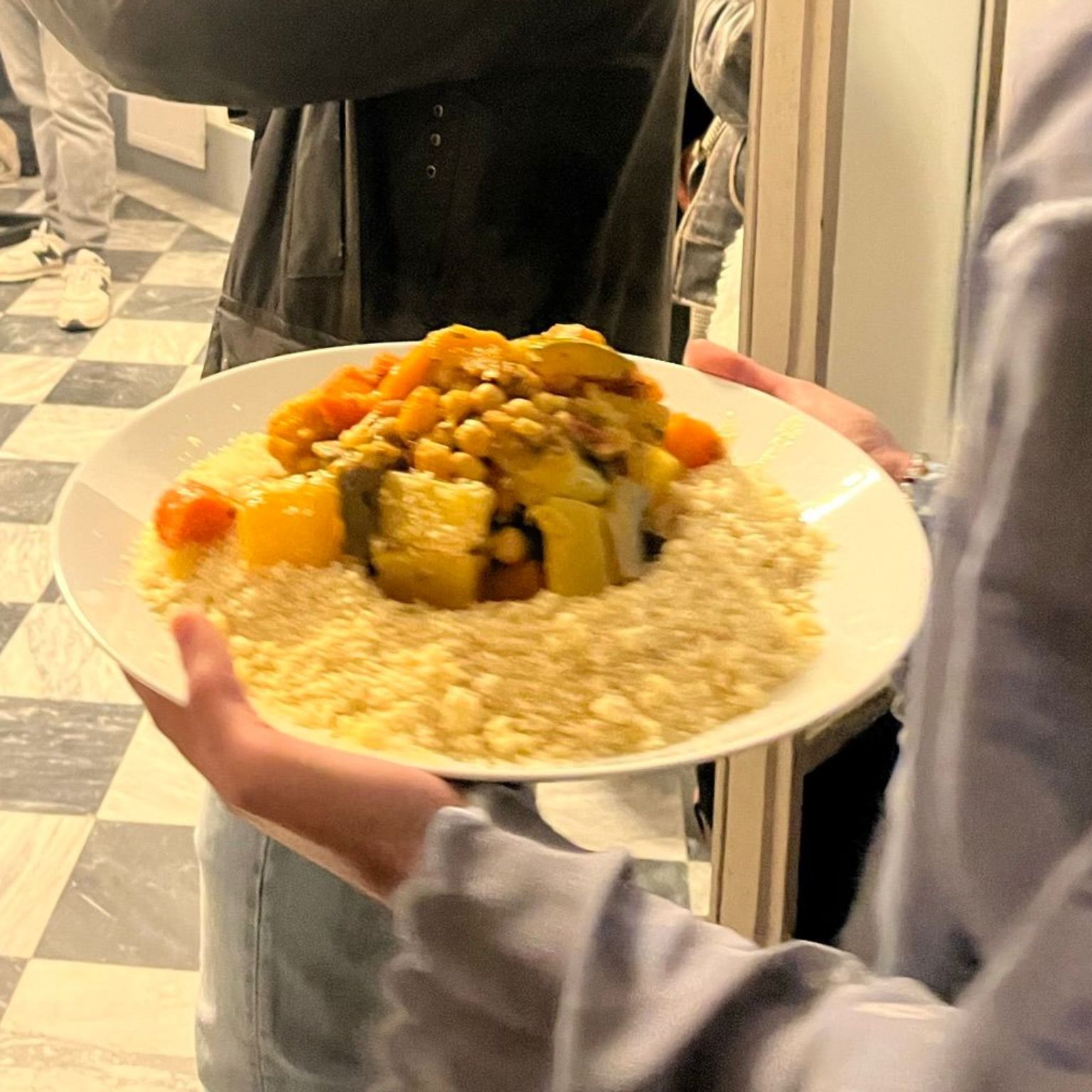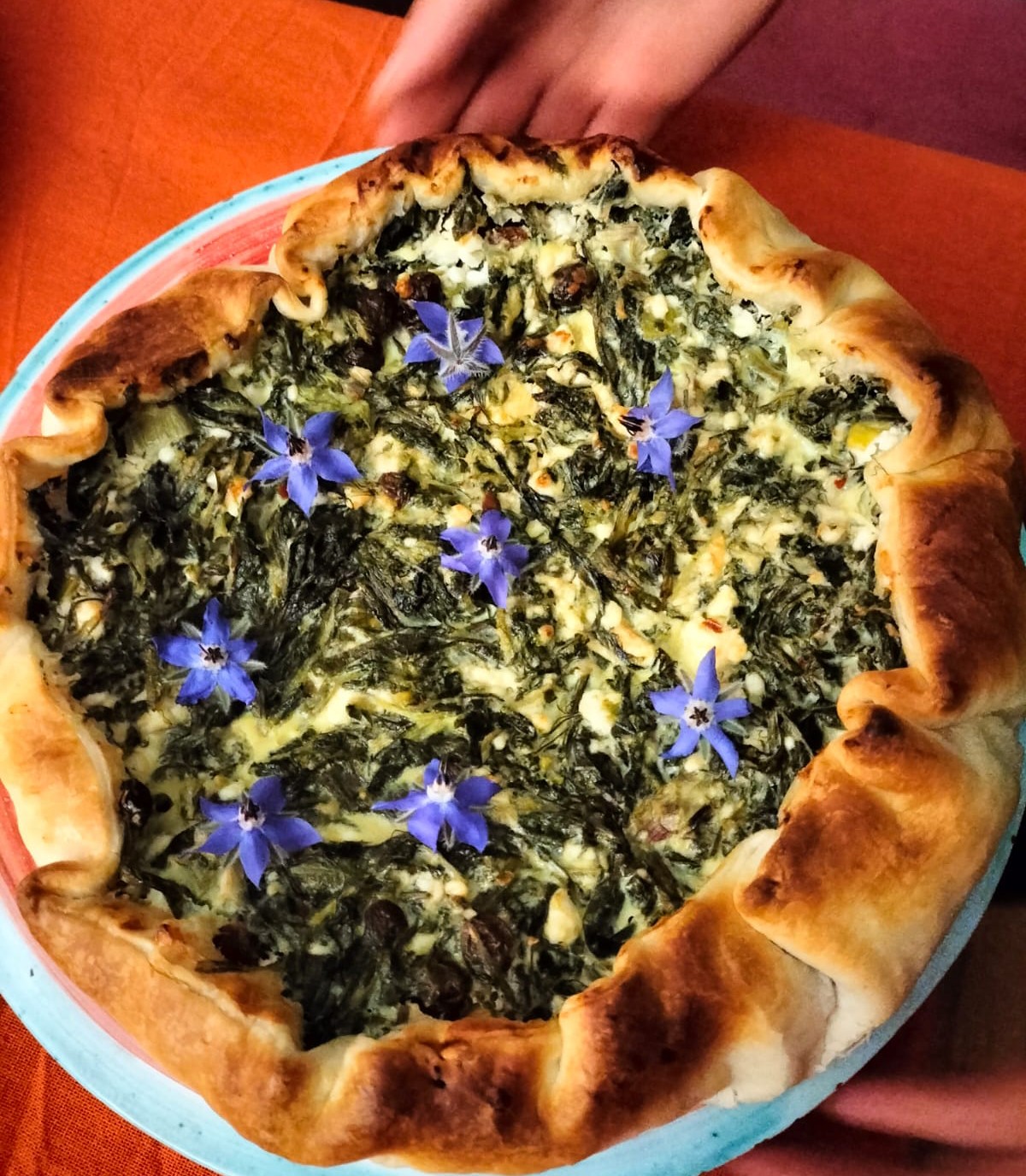Monthly Dispatch
from VILLA ROMANA - March 2024

This time I would like to start à rebours, in reverse. With an encounter that imbues with further meaning the thick accumulation of experiences that unfolded during this last month. Last 28 March 2024, we had the privilege to participate in the Florentine premiere of Paul B. Preciado’s docufiction film Orlando. My political biography, and to listen to and meet in person the philosopher, who gave such an important impetus for instance to the documenta14. Our delegation of Villa Romana inhabitants and guest artists was composed of avid readers of the philosopher and curator’s literature and practice. In a discussion following the screening, Preciado made clear that despite the many dark forces of these times, and the different oppressive energies currently flowing in multiple directions, he remains optimistic. He explained that his optimism is a political optimism, one that he embraces as a political technology of transformation, as a methodology: Ours is a time in which epochal epistemological shifts are taking form and shape, ones that will carry us into a totally new – and hopefully liberated – space. As he writes in the last lines of introduction to his latest book Dysphoria Mundi, we are going through what will perhaps be the most beautiful (or most devastating) collective adventure we have ever embarked on. Preciado here talks about the transformations that we perceive in the social, political, and sexual spheres, and the opportunity that we all have to embrace this planetary transition.
At Villa Romana, we also believe that in these very years we are experiencing a planetary shift, and that what we are doing here is to test grounds for this transmutation and passage to happen. We are doing it through co-habitation – beyond mere Western paradigms, beyond nuclear family boundaries, and in collaboration with more-than-human agencies –, through ecological engagement and agroecological care, through the idea that togetherness and sustainability are our commons. We are supporting it with our constant artistic commitment in nourishing a community and research that is diverse and sensitive, that is in constant becoming and escapes binarism.
Given this short foreword before describing the diary of the last 31 days in the Villa, many of the things that happened here can be situated and read with a wider afflatus.
During this month, all fellows arrived and settled in the house, with their children and their multiple identities, with their artistic research and their diverse agencies. They immediately filled the house with a new urgency and tone, one that moved us naturally and organically at ease. Giving time and space to the fellows to find their rhythms and situated spirits, we started convening, pondering, cooking, and wandering – in other words: carving out together our code of conviviality and our policies of reciprocity, finding ways to attune to each other’s needs and sensibilities.
We were supported in this endeavour and blessed by the presence of our guest artists Zineb Achoubie and Lorenzo Sandoval, who reached us from Morocco and Spain thanks to a grant from The Anna Lindh Euro-Mediterranean Foundation for the Dialogue Between Cultures. The two artists, who spent the whole month here with us and launched the project Akou-Eko-Oikos, conducted research at the intersection of weaving, storytelling, acoustics, circular economy, and domesticity: They worked with us on the ground, in the villa – activating all the spaces of the house, from the library, to the garden, from the pavements and to all the patterns of the entire building –; with them, we visited different local laboratories and practitioners like the unique Lottozero in Prato, working at the intersection of different disciplines, we experimented formats and media. But what the artists have been very concretely doing over the course of these 31 days of togetherness has been substantially creating infrastructures of listening: carving out spaces for practicing deep and intersectional gestures of reciprocity, and supporting new forms of conversation and dialogue. Researching about possibilities of improving the acoustics of Villa Romana to enable a less dispersive domestic politics of listening – and consequentially a more sensitive practice of co-habitation –, the two artists catered us and the fellows with constant situations of exchange and collective reflection. The final restitution of their research concretised with an Acous-Coustic Session, the first of a series, that saw the performative participation of our fellows Ruben D’Hèrs and Sergio Zevallos. The event represented an occasion to learn about the project while listening to some new sound pieces and research composed by the just arrived fellows, and while sharing a cous-cous meal cooked by Zineb following her mother’s recipe with many guests. We give thanks for such intellectual and social generosity, and we are grateful for the occasion of attunement and the connection.
Another great moment of cognitive and affective attunement happened on the occasion of the talk by philosopher Matteo Pasquinelli (Associate Professor in Philosophy of Science at the Department of Philosophy and Cultural Heritage of Ca’ Foscari University in Venice) on 20 March, followed by a conversation with our fellow Monaì de Paula Antunes and our guest artist Lorenzo Sandoval: Presenting his latest book The Eye of the Master: A Social History of Artificial Intelligence (Verso) in collaboration with the University of Siena, Pasquinelli provided an input to think through AI, its imitation of the intelligence of labour and social relations, and the possibilities we are left with to escape the loops of control. The conversation, with cogitations about gambiarra design brought in by Monaì and about non-western forms of computation and interrelationality by Lorenzo, like the quipu and forms of more-than-human intelligence, provoked reflections about the potential of interdependent ambiguous relationships that may not fit in dominant forms of discourse, and about the importance of our artistic communal experimentation – embodying an experience of interconnectedness to expand perceptions of the environment, more-than-human intelligence and technology.
It was a month of celebrations and conviviality, with our tradition of communal meals and collective sessions starting again on a regular basis, to reflect together around our practice of co-habitation and our artistic research. On 8 March, we made new friends and honored the day of womanhood with a wonderful cous-cous lunch organized by Zineb Achoubie and Mistura Allison, to praise anti-patriarchal accomplishments and rejoice feminism as a practice against the mere ticking of boxes. We celebrated birthdays and days of passage, reconnecting to the after-winter life of the garden and the spring.
It was a month of some travelling too: to Berlin for a focused and inspiring board meeting, and for the opening of Märzmusik, with the special programme of bell performances organized by our Jessica Ekomane (Villa Romana Fellow 2023); and to Rome, for weaving collaborations with artists and academies – with Hamedine Kane at the Villa Medici, to plot a future collaboration, and with Ane Rodríguez Armendariz at the Spanish Academy, for her research and series Materie di Cura, about artists residencies and spaces of experimentation and care-full co-existence. We participated collectively to lectures intersecting with our programme, like the screening of Theo Eshetu at the NABA in Milano, organized by Jonas Tinius, as the presentation of Lorenzo Sandoval, and to the bold lecture of our Mistura Allison at the Syracuse University in Florence: Mapping Oríkì: Intersections of Spatial Memory and Film, an incredible occasion to learn more about each other’s practice and about what moves our personal research.
We greeted people, like amazing Helena Uambembe and Tewa Barnosa, who left mid-March after her guest residency, and welcoming new people, new ideas, new seeds to sprout. Aside the fellows and the guest artists, we had the pleasure to host Matteo Pasquinelli, Wietske Maas and their son Giotto, to receive curators doing studio visits and researching, among which Aude Mgba and Paz Guevara, welcoming people paying us a visit, like German Ambassador to Italy, Dr Hans-Dieter Lucas, and director of the Goethe Institute in Rome and Italy, Dr Joachim Bernauer.
The month ended with the arrival of three new artists in the house – Saverio Cantoni, Yuni Chung, and Gabriella Hirst –, artists and practitioners who will contribute to the well-being of our collaboration with the plants and more-than-human agencies in the garden, and of our spirits. We are ready for a new chapter, opening up to the possibility of drafting unexpected ecological discourses and practices that can embrace contradictions and the plurality of worlds at the moment living under the same roof.

|
Cous-Cous by Zineb Achoubie
Couscous
Retrieve the vegetables from the broth in the center of the couscous with a slotted spoon and arrange all around (in pyramid style, if you like). Garnish with the chickpeas , chili peppers and even the bouquet of parsley if you like. Drizzle several cups of broth carefully over the couscous. Offer the remaining broth in bowls on the side. * Tfaya is optional and can be used as a garnish or served on the side.
In the rural calendars, April is the month of shearing, of transformations, it is the month of changes and regenerations. Hence, from the Radio Papesse Archive for April, we invite you to listen to Plotting the Urban Body - Itinerario Acqua • Nord • Rifredi, a sound and narrative journey by Maria Pecchioli, punctuated by archive materials, personal memories, collective history and field recordings. In this narrative - which originates from the Rifredi district in Florence, where Maria was born and has now returned to live - the processes of transformation and energy stasis of the city are reflected in individual and collective changes. |
Evergreen Recipes by Claudia Fromm
Spring Pie with Wild Herbs
The month of March has given us an abundance of wild edible herbs in the garden, very tasty and rich in vitamins and minerals! Ingredients for a baking tin with a diameter of 26 cm For the “mad” dough:
First of all, make a well in the flour, add the water, olive oil and salt and knead with your hands starting from the centre and gathering all the ingredients together until you obtain a smooth, homogeneous dough and seal it in a food film. Let it rest for 30 minutes. In the meantime, cut and wash the herbs, blanch them and pan-fry them with the spring onions. Season with salt and pepper and let the herbs cool. Then mix the cooked herbs with the eggs, the crumbled feta cheese and the sultanas previously soaked in water. Roll out the dough, grease a baking tin and place the dough with holes in the base. Spread the filling, fold over the edges as in the photo and brush lightly with oil. Bake at 180 degrees for about 30 minutes. Enjoy! PERIOD! by Maike Wild
|
|
|
|
|
|
|











